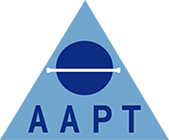News
Advancing Post-Mortem Reconstruction: A Landmark Course at the University of St Andrews
In May 2025, embalmers from across the UK and Europe gathered at the University of St Andrews, School of Medicine for a week-long Post-Mortem Reconstruction Course
.jpg)
This specialist course, held within the anatomy facilities of one of the UK’s most respected medical institutions, focused on the development of practical skills in cranial and facial reconstruction, soft tissue restoration, and the application of airbrush cosmetics in traumatic cases. The curriculum was meticulously designed to meet the growing need for advanced restorative techniques in the embalming profession—especially as we encounter increasingly complex trauma presentations in the care of the deceased.
Course Leadership and Structure
Martin Jeffrey, a respected authority in post-mortem reconstruction, was joined by Jen Mahoney MBIE, Chair of the BIE Yorkshire Division, who provided expert tuition and support throughout. Under their guidance, participants engaged in structured, hands-on exercises that emphasised both technical precision and aesthetic sensitivity.
From theoretical demonstrations to guided reconstruction on anatomical specimens, the course challenged participants to push the limits of their existing skill sets. In doing so, it fostered confidence and competence in approaching severe trauma cases—empowering embalmers to restore dignity for the deceased and offer closure for families during the most difficult times.
Professional Collaboration and Educational Excellence
This course was made possible by the approval of Professor Gordon Findlater, HM Inspector of Anatomy for Scotland, through close collaboration with the University of St Andrews, whose body donation programme offers a unique opportunity for practical embalming education on human anatomical specimens—an invaluable experience for professionals seeking to deepen their anatomical understanding and practical capabilities.
Special thanks are due to Dr Enis Cezayirli, Head of Anatomy at the University, for his unwavering support, as well as to Craig Caldwell and colleagues at The Mazwell Group, and Richard Arnold of Omega, whose contributions to logistics and equipment were instrumental.
Feedback and Impact
Feedback from attendees was overwhelmingly positive, with many citing the course as “transformational” in both technique and confidence. Participants noted the clarity of instruction, the high standard of facilities, and the professional yet collegial atmosphere fostered throughout the week.
“The opportunity to learn from two of the most skilled and respected professionals in our field has left a lasting impact—not just in technical ability, but in the confidence to offer families the very best in post-mortem care.”
“This course is not only about learning how to rebuild—it’s about learning how to restore dignity, honour the deceased, and serve families with excellence in the most demanding situations.”
“I would highly recommend this course to any embalmer committed to professional growth. The skills learned here can change lives—and deaths.”
Raising Standards Across the Profession
As expectations rise within funeral service and bereavement care, the value of continuous professional development becomes ever more apparent. Courses like this serve not only to enhance individual skills but also to elevate the standard of care we offer as a profession.
Martin Jeffrey commented:
“It’s an honour to be part of a course that combines deep anatomical learning with the human side of our work—compassion, respect, and excellence in service. My sincere thanks to Jen Mahoney, the University team, and every participant for making this a success.”
APT Thomas Cook summarised the week with the following:
“ The course structure was fantastic, we each were assigned a patient who had been dissected over the past few years by medical students to a heavy level, at first look it was quite overwhelming to think we only had a week to get them ready for a chapel of rest visit. Each day we focused on a different element from reattaching various facial bones, to modelling missing bits of anatomy all the way to learning and applying different cosmetics to get the patient to a state that they would be able to be seen by their loved ones.
Martin and Jen were both on hand and would go around the room lending 1:1 time to us all to ensure that we were able to ask questions that might have only been relevant to our patient, or to discuss different approaches to patients based on experiences that we had previously encountered
It was a great week of learning techniques that you never think to use in day to day reconstruction. I learnt lots about presentation of the deceased for chapel of rest visits for patients who might not have been in the best condition prior to arrival at the mortuary and in addition came away with lots of new methods of reconstructing patients who may have seen significant damage as a result of trauma. Whilst I was the only APT I felt more than welcome and was more than able to ask questions pertaining to an APT perspective.
I look forward to and will certainly use the skills gathered by attending this course and cannot thank Martin and Jen enough for their support during the course. I recommend this course to anyone who wishes to learn more about post mortem reconstruction.”
